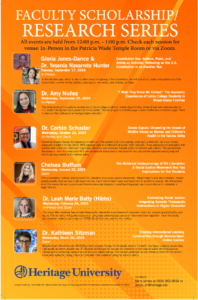Center for Intercultural Learning & Teaching

Our Center for Intercultural Learning & Teaching (CILT) supports the Heritage mission by enhancing the quality of student learning and faculty well-being.
Learn more about all of the ways we can provide support to our dedicated faculty and staff!
About Us
The Center for Intercultural Learning and Teaching at Heritage University began in 2003 as an initiative of the Vice President for Academic Affairs, Dr. Sneh Veena. Dr. Peter Frederick, (distinguished Visiting Scholar and Professor of History) and Professor Mary James (Assistant Professor of English and Humanities) developed the vision and framework for CILT’s operation and served as the first facilitators. The members of the Heritage faculty are indebted to these two leaders for the collaborative and supportive spirit that characterize the work of the Center.
When Dr. Frederick retired in 2006, Professor Ed Rousculp, formerly Chair of the Teacher Education Program, joined with Professor Mary James as co-facilitator in the Center. The Center sponsors a series of regularly scheduled faculty development opportunities focusing on research-based strategies, intercultural learning, student-centered approaches, meaningful use of instructional technology and examples of best practices from Heritage faculty.
In 2010, CILT’s ability to meet all aspects of its mission developed further through “Visiting Professors for Faculty Development in Native American and Hispanic Cultural Studies,” a project made possible by a grant from the National Endowment for the Humanities. The grant funded “the development of digital materials to enable faculty to insert content from visiting scholar’s presentations into future teaching of their courses and also preserve the [visiting professors’] valuable presentations for… the total campus” (Grant Summary, 2010, September 25).
You can learn more in an article by Peter Frederick and Mary James — “‘Heritage Rocks’: Principles and Best Practices of Effective Intercultural Teaching and Learning” — published in the 25th anniversary volume of To Improve the Academy.
 Frederick, Peter, and Mary James. “’Heritage Rocks’: Principles and Best Practices of Intercultural Teaching and Learning.” In To Improve the Academy: Resources for Faculty, Instructional, and Organizational Development, vol. 25, edited by Douglas R. Robertson and Linda B. Nilson. Bolton, MA: Anker Publishing, 2007.
Frederick, Peter, and Mary James. “’Heritage Rocks’: Principles and Best Practices of Intercultural Teaching and Learning.” In To Improve the Academy: Resources for Faculty, Instructional, and Organizational Development, vol. 25, edited by Douglas R. Robertson and Linda B. Nilson. Bolton, MA: Anker Publishing, 2007.
Our Mission
- To support the Heritage mission and vision
- To enhance the quality of student learning and faculty well-being
- To affirm and nurture innovative, intercultural teaching practices
- To intentionally link faculty development to student learning outcomes
- To make visible the Heritage story of effective intercultural learning by gathering and disseminating illustrative stories
Our Services
Here are some of the ways we support our faculty and students!
- Join us for faculty conversations/workshops on learning and teaching (and its intercultural aspects) — check back for announcements!
- Invite us for a visit to your classroom and a follow-up descriptive, non-evaluative feedback conversation about shared teaching and learning issues and concerns —coffee/tea/soda is on us!
- Participate in mid-semester classroom research and feedback on your students’ learning — watch for mid-semester feedback materials in your box or in an email message.
- Request a professional development consultation on any learning or teaching issue with which you want help, including feedback on drafts of assignments, tests or syllabi.
- Browse our professional development, career pathways and pedagogical materials — soon to be catalogued.
- Clarify the links between the “Key Characteristics of Effective Teaching,” the student learning outcomes in your course and your own professional development goals —anticipate the annual review.
- Tell our successes. Share your stories of effective (intercultural) classroom practice; invite us to interview you and write up the conversation for your review and possible publication!
While we have scheduled activities, we always welcome drop-in visits, phone calls, emails, collaboration and informal conversations at lunch. Contact us at your convenience! Our Center is for both part-time and full-time faculty.
We look forward to talking to you!
Our Center is ready to help!
- Looking for new ideas to strengthen student learning in your class?
- Want to add diverse perspectives to your coursework?
- Interested in improving communication between students on sensitive topics?
- Need practice with the technology available in your classroom?
- Using lecture-capture technology or online classroom teaching for the first time?
- Need ideas for meaningful ways to integrate technology into your classes?
- Need a few tips about using MyHeritage or Chalk & Wire?
Call us for a referral!
Center Facilitators and Affiliate Faculty Members
Gloria Jones-Dance, Co-Facilitator
CILT/University 101 Coordinator
Assistant Professor
Teacher Preparation & Humanities
Academic Affairs/Provost Office
Jones-Dance_G@heritage.edu
Mary C. James, Co-Facilitator
CILT & Logistics/Evaluation
Academic Affairs/Provost Office
James_M@heritage.edu
Dr. James “Jim” Dugan
Instructional Designer, CILT
Faculty Help Desk (Instant Chat)
Academic Affairs/Provost Office
Dugan_J@heritage.edu
Faculty Development and Evaluation
Key Characteristics of Successful Heritage Faculty
The Key Characteristics were derived from observations of successful Heritage faculty and serve as the basis for faculty development and evauation.
Midterm Feedback Process and Instrument
Process has helped many faculty make beneficial mid-course adjustments.
Accessing Course Eval Results
Instructions for accessing student feedback from end-of-semester course evaluations.
Assessment
HU Core Themes and Assessment Questions
Everyone should be aware of the University’s Core Themes
University Goals and Key Assessment Indicators for Student Performance
Do you and your students know the University Goals and Key Assessment Indicators for your courses?
ePortfolio Vision Statement
What should the ePortfolio system do for students, faculty, and programs? Only student, faculty, and program actions can realize the potential.
HU Assessment Handbook
Guidelines and procedures for the University assessment system
Resources for Developing Syllabi
Academic Calendar for current school year
Key dates for inclusion in course syllabi
Syllabus Template for Undergraduate Education
Standard format for syllabi written for undergraduate classes in the College of Education & Psychology
Syllabus Template for Graduate Education
Standard format for syllabi written for graduate classes in the College of Education & Psychology, excluding online classes.
Syllabus Template for Graduate Online Programs
Standard format for syllabi written for graduate online classes in the College of Education & Psychology.
Workshop Guide for reVisioning Course Syllabi
A guide in workshops facilitating significant revision of a course syllabus.
Guides for Using Instructional Technology (Faculty)
Beginning to Use MyHeritage: Guidelines for Faculty
A step-by-step guide for using the various portals in MyHeritage to support student learning and retention.
Faculty Guide to Assessing Key Assignments in the Chalk and Wire ePortfolio
Explains the process of setting up a student group and assessing key assignments.
Faculty Guide to Create a Course/Advisor Group
Explains the process of creating a course/advisor group to help students trace their progress.
Tutorial to Ease the Transition to Office 2010
This tutorial will help you switch from Office 2003 or Office 2007 to Office 2010.
Guides for Using Instructional Technology (Students)
Student Guide to Naming and Creating Your Portfolio
Step-by-step instructions for creating your Portfolio on MyHertiage to match your course(s) and provide the correct key assignments.
Student Guide for Registering an ePortfolio Account
The first handout to give students who are just purchasing their ePortfolio account and need to get started.
Student Guide for Uploading and Submitting Assignments in ePortfolio
Guides students through process of uploading, placing, and submitting assignments for assessment.
Student Guide for Locating Resources and Ruberics in ePortfolio
Helps students find the rubric for a particular key assignment along with accompanying resources, when available.
Student Guide for Reviewing Feedback on Assessed Work
Helps students easily access instructor feedback on previously submitted assignments.
Tutorial to Ease the Transition to Office 2010
This tutorial will help you switch from Office 2003 or Office 2007 to Office 2010.
Creative Visual Representations
Creative, Visual Representations of Students’ Reflections
Professor Mary James teaches Hum 305 Heritage Core, a required course for all transfer students.
Of Students’ Reflections
Professor Mary James teaches Hum 305 Heritage Core, a required course for all transfer students. Heritage Core focuses on helping students experience the Heritage University mission through writing and intensive work in a cross-cultural experiences and communication. Student reflection provides a window on the transferomational nature of these experiences. Written reflections can be found in many face-to-face and online classes, but Professor James’ students also show the power of visual representations of their deep thinking and feeling in response to class assignments. You will find here a description of the assignment, as well as several samples of students’ work.
Fractals in Cultural Expression
Fractals in Cultural Expression
Dr. Apanakhi Buckley participated in the 2009-2010 project dedicated to enhancing the use of the humanities across the curriculum at Heritage University and supported by a grant from the National Endowment of the Humanities.
Dr. Apanakhi Buckley participated in the 2009-2010 project dedicated to enhancing the use of the humanities across the curriculum at Heritage University and supported by a grant from the National Endowment of the Humanities. Dr. Buckley is Professor of Education and primarily teaches course in methods for teachign science and mathematics at the elementary and middle school levels. She shares here a PowerPoint program designed for her methods in mathematics course after participating in a seminar led by artists and author, Elizabeth Woody. She makes numerous connections between fractals and a variety of forms of cultural expression, sharing her own story in the process and inviting students’ stories as well.
Contact CILT
Gloria Jones-Dance
Co-Facilitator
Jones-Dance_G@heritage.edu
Mary James
Co-Facilitator
James_M@heritage.edu
Dr. James “Jim” Dugan
Instructional Designer, CILT
Dugan_J@heritage.edu

